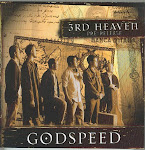 1.
1. Keep it simple. "He said" and "She said" will usually do. Your reader is trained to accept this repetition.
2. Forget you ever heard of strong verbs. Skip the "He yelped" and the "She sighed." They slow your dialogue down. If you feel need them, look at the words,the actual dialogue your character used when he was yelping. Maybe it doesn’t reflect the way someone would sound if he yelped. Maybe if you strengthen the dialogue, you can ditch the overblown tag.
3. When you can, reveal who is saying something by the voice or tone of the dialogue. That way you may be able to skip tags occasionally, especially when you have only two people speaking to one another. Your dialogue will ring truer, too.
4. Avoid having characters use other characters’ names. In real life, we don’t use people’s names in our speech much. We tend to reserve using names for when we’re angry or disapproving or we just met in a room full of people and we’re practicing out social skills. Having a character direct her speech to one character or another by using her name is a lazy writer’s way of directing dialogue and it will annoy the reader. When a reader is annoyed, she will not be immersed in the story you are trying to tell.
5. Avoid putting internal dialogue in italics. Trust your reader. She will know who is thinking the words from the point of view of the narrative.
6. Be cautious about using dialogue to tell something that should be shown. It doesn’t help much to transfer telling from the narrator to the dialogue. It just makes the character who is speaking sound long winded. Putting quotation marks around exposition won’t draw the reader into the scene or involve him more than if you’d left it part of the narrative.
7. And magic number seven is, don’t break up dialogue sequences with long or overly frequent blocks of narrative. One of dialogue’s greatest advantages is that it moves a story along. If a writer inserts too much stage direction, it will lose the forward motion and any tension it is building.
For more on writing dialogue check out Tom Chiarella’s Writing Dialogue (Writers’ Digest) and for more on editing in general--from editing query letters to turning unattractive adverbs into metaphoric gold--find The Frugal Editor: Put Your Best Book Forward to Avoid Humiliation and Ensure Success on Amazon.
Carolyn Howard-Johnson is an instructor for the UCLA Extension Writer's Program. The first book in her HowToDoItFrugally Series of books, The Frugal Book Promoter, won USA Book News'Best Professional Book Award and Book Publicists of Southern California's Irwin Award. The second, The Frugal Editor, was just released and includes many editing tips on dialogue, the use of quotation marks and more. Learn more at www.howtodoitfrugally.com.

























